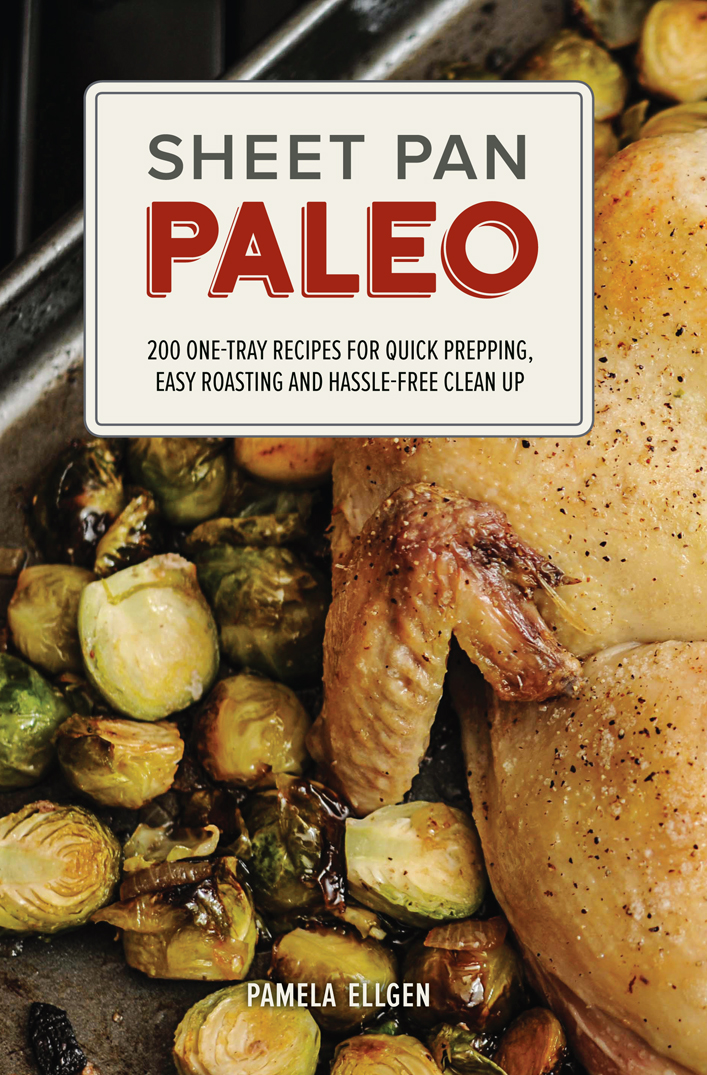
 Text copyright 2016 Pamela Ellgen. Design and concept copyright 2016 Ulysses Press and its licensors. All rights reserved. Any unauthorized duplication in whole or in part or dissemination of this edition by any means (including but not limited to photocopying, electronic devices, digital versions, and the Internet) will be prosecuted to the fullest extent of the law. Published in the U.S. by ULYSSES PRESS P.O.
Text copyright 2016 Pamela Ellgen. Design and concept copyright 2016 Ulysses Press and its licensors. All rights reserved. Any unauthorized duplication in whole or in part or dissemination of this edition by any means (including but not limited to photocopying, electronic devices, digital versions, and the Internet) will be prosecuted to the fullest extent of the law. Published in the U.S. by ULYSSES PRESS P.O.
Box 3440 Berkeley, CA 94703 www.ulyssespress.com eISBN: 978-1-61243-541-1 Acquisitions Editor: Casie Vogel Managing Editor: Claire Chun Project Editor: Alice Riegert Editor: Lauren Harrison Proofreader: Barbara Schultz Production: Caety Klingman Front cover design: Michelle Thompson Cover photographs: Pamela Ellgen Distributed by Publishers Group West NOTE TO READERS: This book has been written and published strictly for informational and educational purposes only. It is not intended to serve as medical advice or to be any form of medical treatment. You should always consult your physician before altering or changing any aspect of your medical treatment and/or undertaking a diet regimen, including the guidelines as described in this book. Do not stop or change any prescription medications without the guidance and advice of your physician. Any use of the information in this book is made on the readers good judgment after consulting with his or her physician and is the readers sole responsibility. This book is not intended to diagnose or treat any medical condition and is not a substitute for a physician.
This book is independently authored and published and no sponsorship or endorsement of this book by, and no affiliation with, any trademarked brands or other products mentioned within is claimed or suggested. All trademarks that appear in ingredient lists and elsewhere in this book belong to their respective owners and are used here for informational purposes only. The authors and publishers encourage readers to patronize the quality brands mentioned and pictured in this book. To my mom, who was the first to say, Dont toss the yolks! and raised me on a diet of whole foods. I am forever grateful for the foundation of good nutrition she provided. Table of Contents
Guide
Contents When I first began eating Paleo foods, I thought the menu would be limited and that I would feel hungry all the time.
Sheet Pan Paleo offers a convenient solution to eating like your Paleolithic ancestors without spending hours hunting, fishing, or tending a fireall with just a sheet pan! If youre like most of us, you stop by the market after a long workday, snag whatevers fresh, and head home to cook.
Sheet Pan Paleo offers a convenient solution to eating like your Paleolithic ancestors without spending hours hunting, fishing, or tending a fireall with just a sheet pan! If youre like most of us, you stop by the market after a long workday, snag whatevers fresh, and head home to cook.
This book makes it easy to prepare a filling Paleo meal. The recipes are brimming with fresh vegetables, pastured meat and poultry, wild fish, and a generous dose of herbs and spices. Theres even a bit of dark chocolate and wine thrown in for good measure. Recipes are naturally gluten- and dairy-free, and are labeled nightshade-free, vegan, and low-FODMAP, where applicable. FODMAPs are fermentable fibers found in a variety of foods that some people find difficult to digest. provides a general framework for Paleo foods.
It contains guidance from experts on Paleo nutrition and evolutionary biology to help you understand the rationale behind the diet and how to choose the most nutritious foods within the Paleo paradigm. The remaining chapters are arranged according to the main source of protein, from beef and lamb to fish and seafood, and theres even a chapter of all-vegetarian entrees. Ive also included a chapter for appetizers and desserts. Recipes are easy to follow and designed to fit a whole meal onto one pan for easy preparation and cleanup. Some recipes are simple weeknight suppers to throw in the oven at a moments notice, such as (page 95). What Is Paleo? Before the advent of agriculture, humans feasted on what they could hunt or gathera diet of seasonal vegetables, fruit, and nuts, along with an array of eggs, game meats, wild fish, and even insects. What Is Paleo? Before the advent of agriculture, humans feasted on what they could hunt or gathera diet of seasonal vegetables, fruit, and nuts, along with an array of eggs, game meats, wild fish, and even insects.
The diet was complemented by regular physical activity and exposure to sunlight, the perils of prehistoric life notwithstanding. Fast-forward to the modern landscape. Hunting and gathering is no longer a part of our lifestyle. Nevertheless, the unprocessed, whole plant and animal foods that humans consumed before the advent of agriculture, and specifically before the Industrial Revolution, are an ideal fuel. They provide the greatest nutrient density and the optimal ratios of macronutrientsfat, protein, and carbohydratefor health and vitality. Dr.
Loren Cordain was one of the first to introduce a diet based on the Paleolithic period to a mainstream audience with his book The Paleo Diet. In an article published in the American Journal of Clinical Nutrition, he argued that Paleolithic diets varied widely based on geography, climate, and season, but necessarily would have included a diverse array of minimally processed, wild plant and animal foods and little or no grains, dairy, sugar, or industrial oils. Although there is some debate about exactly when humans began consuming these foods, it is clear that highly processed versions of these foods represent staples of modern life and that this is a drastic shift from the diets humans adapted to eating over many millennia. Numerous other researchers have contributed to the depth and breadth of knowledge on ancestral nutrition, including Robb Wolf, Mark Sisson, Chris Kresser, Paul Jaminet, PhD, Mat Lalonde PhD, and many other notable scientists. Their perspectives have been incorporated in choosing the ingredients and preparation methods in this book. A Healthy Paradigm I was first introduced to the Paleo diet by Aaron Blaisdell, PhD, professor at UCLA and founder of the Ancestral Health Symposium.
One of the things I particularly appreciated about Dr. Blaisdell was his common-sense approach. He said, The way to think about it is, What kinds of foods do humans thrive on, and which foods are dense with those kind of nutrientsthe vitamins, minerals, and types of proteinsand in the optimal ratios? On the other end of the spectrum, which things are the most damaging? Here is a general list of what not to eat on a Paleo-style diet: Processed foods Refined sugar High-fructose corn syrup Artificial sweeteners Industrial oils Legumes Grains Dairy Here is a general list of foods you should eat on a Paleo-style diet: Vegetables and fruit Nuts and seeds Meat and poultry Organ meats Fish and shellfish Eggs Herbs and spices Vinegar and fermented foods VEGETABLES AND FRUIT Modern interpretations of the Paleo diet encourage choosing local, organic vegetables and fruit in season whenever possible. Frozen vegetables are a close second, but canned varieties are discouraged because they lose much of their nutritional value and are exposed to chemicals such as BPA from the can. I make an exception for canned tomatoes, but feel free to use fresh tomatoes if theyre in season. Dried fruits are used with discretion because theyre a concentrated source of sugar.
Next page


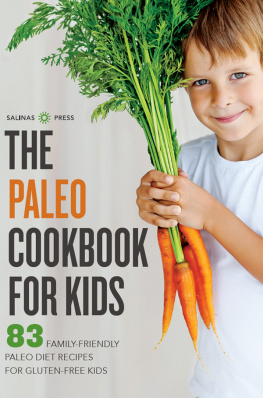


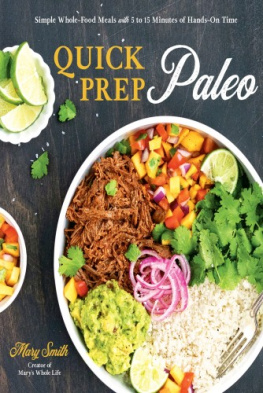
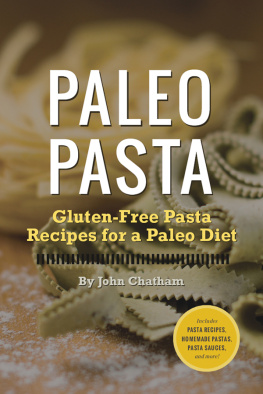

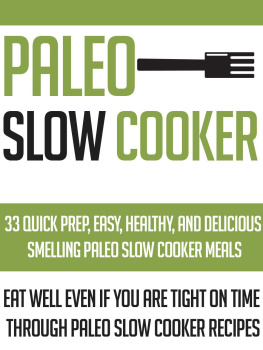
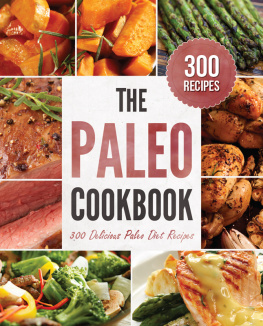
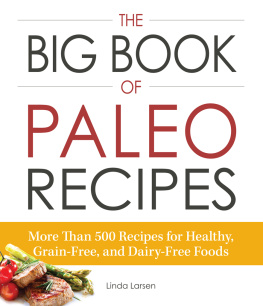

 Text copyright 2016 Pamela Ellgen. Design and concept copyright 2016 Ulysses Press and its licensors. All rights reserved. Any unauthorized duplication in whole or in part or dissemination of this edition by any means (including but not limited to photocopying, electronic devices, digital versions, and the Internet) will be prosecuted to the fullest extent of the law. Published in the U.S. by ULYSSES PRESS P.O.
Text copyright 2016 Pamela Ellgen. Design and concept copyright 2016 Ulysses Press and its licensors. All rights reserved. Any unauthorized duplication in whole or in part or dissemination of this edition by any means (including but not limited to photocopying, electronic devices, digital versions, and the Internet) will be prosecuted to the fullest extent of the law. Published in the U.S. by ULYSSES PRESS P.O.